Your school just declared a coronavirus shutdown and now you’ve suddenly got two weeks with your kids off school. Not just “off school”, but “at home” in isolation to avoid contaminating others.
You know what this means: endless piles of cleaning up for you and endless hours of passive screen time online for everyone else, resulting in ratty kids, rotting brains and raging tempers. (Even worse, your kids fall behind in school and you fall behind in work).
Unfortunately, this scenario is increasingly likely to happen to all of us.
Around the world, governments and schools are preparing for disruptions due to coronavirus. According to UNESCO, approximately 290.5 million children are stuck at home because of school closures due to COVID-19. Italy said Wednesday that it was closing all schools, joining countries such as China and Japan. The world is now scrambling for ways to manage millions of kids suddenly at home with “nothing to do”, except go online all day.
Because, while global leaders wrestle with big picture strategy, it’s the day-to-day grind that brings down us mere mortals. Particularly when it comes to parenting in a shutdown.
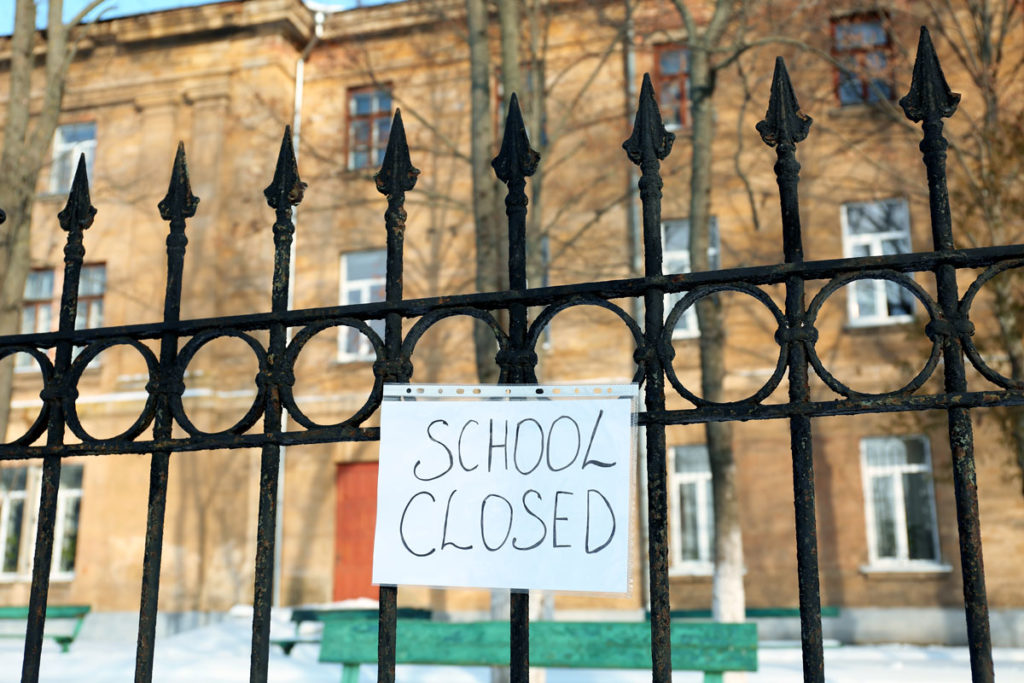
This brings us back to ratty kids, rotting brains, raging tempers…and screen time.
When managing kids at home, screen time is the elephant in the room. Since it is certainly a dominant focus for kids and teens, screen time and media usage impact almost all aspects of daily family life.
In a coronavirus shutdown, do you have a plan to handle the following situations?
- Ensuring your kids and teens get the right amount of sleep — every day.
- Motivating kids to do activities outside of screen time — every day.
- Requiring kids to contribute to household chores and duties — every day.
- Helping kids study online and do schoolwork without digital distractions — every day.
- Limiting excessive passive media, without limiting creative media — every day.
- Getting kids off screens without a battle — every day.
- Teaching kids to self-manage their own screen time and tasks — every day.
- Creating opportunities to bring your family closer together – every day.
If not, then let’s help you create a plan (and keep your sanity). We’ve pulled together 8 practical steps for you in Part 1 of this article (and 7 more to come in Part 2).
With a plan in hand and tools like Habyts to support you, you can even use the shutdown to build family camaraderie, while establishing good habits that will help your kids well beyond the end of the shutdown. (Just so you know, throughout this article, we’ve based the toolset to support your plan on our Habyts product).
Part 1
- Define Goals with Your Family
- Sleep and Structure
- A Balanced Activity Plan
- A “Tasks First” Plan
- Let Kids Learn to Earn Their Privileges
- A “Homework First” Plan
- Limit Digital Distractions during Schoolwork
- Teaching Kids to Self-Manage
Part 2 (upcoming blog)
- Teaching Kids to Self-Manage (cont.)
- Time to Pause
- Transitions and Tantrums
- Focusing on Creative Content
- Recognize Positive Screen Habits
- Gamify Your Family
- Experiment Together
Define Goals with Your Family
We all know the old adage from Benjamin Franklin: “If you fail to plan, you are planning to fail.” Well, managing the shutdown is no different – except for the fact that planning together with your child will put you in an even better position to succeed.
Start with identifying 2-3 goals that you have during the shutdown, e.g. ensuring a calm family life; helping my kids keep digital balance; and making sure I have the time to do my own work.
Then share these goals with your family and get their input.
Then share these goals with your family and get their input. Remember that buy-in drives motivation. In fact, your kids may have some personal goals that they want to set over the shutdown, e.g. playing Fortnite with my friends; keeping up with my homework; and doing up to 20 push-ups a day.
Agree on your shared family and personal goals, keeping in mind that fewer and focused works best. Write them down and put them on the fridge or somewhere else everyone can see.
By the way, all families are different, so be sure to define goals that suit YOUR family.
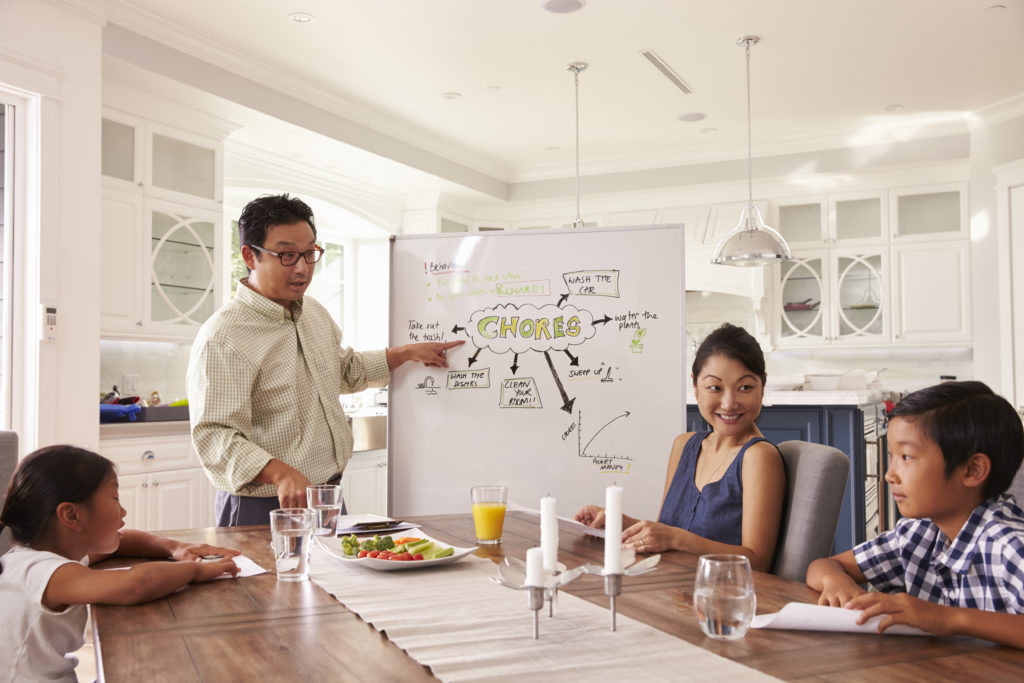
Sleep and Structure
I don’t think I need to convince most parents about the importance of sleep. We live in a sleep-deprived society, yet sleep is an essential part of a child’s routine and an indispensable part of a healthy lifestyle.
During a shutdown, getting enough sleep is a make or break in supporting family harmony and creating a family rhythm. Establishing a consistent bedtime routine is crucial and this includes both stopping the use of electronics at least an hour before bed and making sure kids cannot sneak onto devices too early the next day.
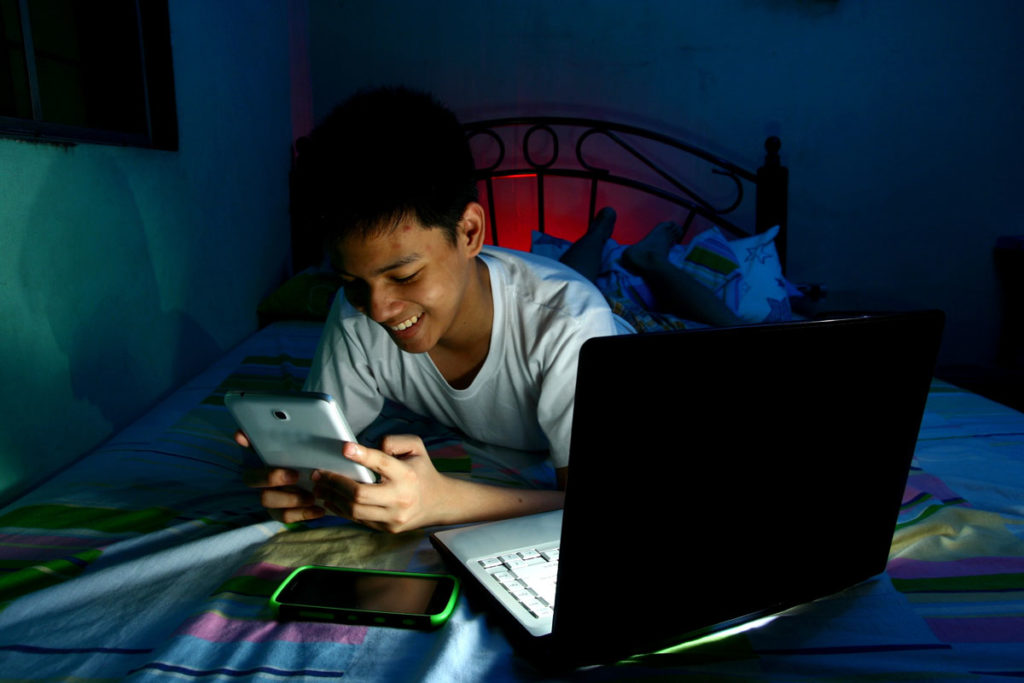
At Habyts, we find that many parents set an earliest and latest time for kids to be allowed on devices. This can vary by the age and temperament of the child or the needs of the family. Some kids may be allowed on any devices from 8 am, while others may not have device access until after lunchtime.
During the shutdown, you may even decide to have screen-free mornings or screen-free evenings.
The important factor is consistency. Tools like Habyts make sense to automate sleep time limits and content filters across child devices.
This means you’ll no longer see the sneaky blue light under the bedroom door when your child should be asleep (or inappropriate content when your child is allowed access in the daytime).
A Balanced Activity Plan
Two weeks at home and none of you can venture out of the house. Let’s make a sample list of activities for your kids, both for their health and well-being as well as your personal sanity.
A few basics may come to mind…
- Sleeping
- Eating
- Schoolwork/Education
- Chores
- Play
- Reading
- Family Time
But actually, “Play” can be broken down further into areas needed to provide balance.
- Exercise / Physical Play
- Creative Play
- Unstructured Play
- Social Play
- Digital Play
Great news! There is potentially a lot for your kids to fit into a day (perfect for a shutdown)! It’s also a chance to brainstorm with your kids a variety of activities for each bucket to help fill their day.
Here is a bit more about a Healthy Play Diet, in which the focus is not on the amount of screen time in isolation but in comparison to other play activities.
But how do you get your kids to do the things they need to do, whether it’s chores or play?

A Tasks First Approach
When it comes to motivating kids to do what needs to be done now, we’ve seen families have lots of success with a “Tasks First” approach. This is similar to the “When/Then” approach, that is, WHEN you finish X, THEN you can do Y.
For example, you may allow access to screen time only after kids complete certain tasks, chores, and goals. It makes good sense when your child has slipped into viewing screen time as an entitlement and daily responsibilities as optional.
Do your kids never seem to have time to lend a hand around the home, but have all the time in the world for screen time? Then a “Tasks First” routine will help, as kids are expected to complete a list of tasks before having access to screen time.
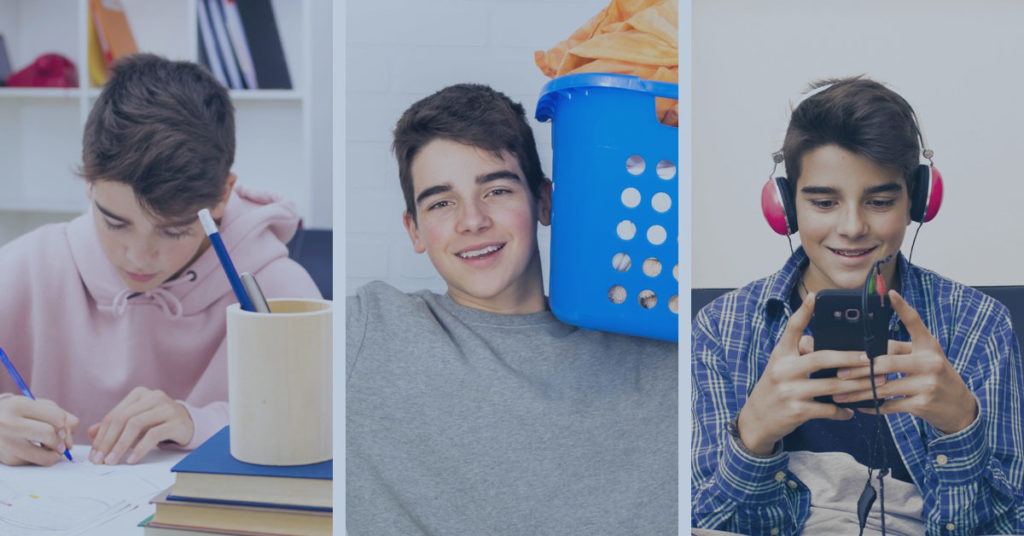
These tasks are not necessarily limited to household chores. For example, the Task list can easily include 30 minutes of practicing an instrument, playing basketball or assigned reading.
Habyts easily automates this process by letting parents block Play Time until Tasks are completed – and even require parent approval (if need be).
Let Kids Learn to Earn Their Privileges
Delayed gratification is an important life lesson that correlates with life success (see The Marshmallow Experiment). A school shutdown provides a good space for kids to learn it.
“Tasks First” is one method of teaching delayed gratification. Learning to earn points-for-privileges is another.
With our Habyts Tasks and Rewards System, you can set your kids regular Tasks to complete – with due time and day. Kids earn Points by doing their Tasks – which can be used for extra screen time or non-screen Rewards.
You decide what works for you and your family and let Habyts provide the consistency needed to build good life habits.
With the Habyts points and privileges system, you can let your kids automatically unlock Bonus Play Time. Or not. (And you can always cap how much – or how little – Bonus Time can be used).
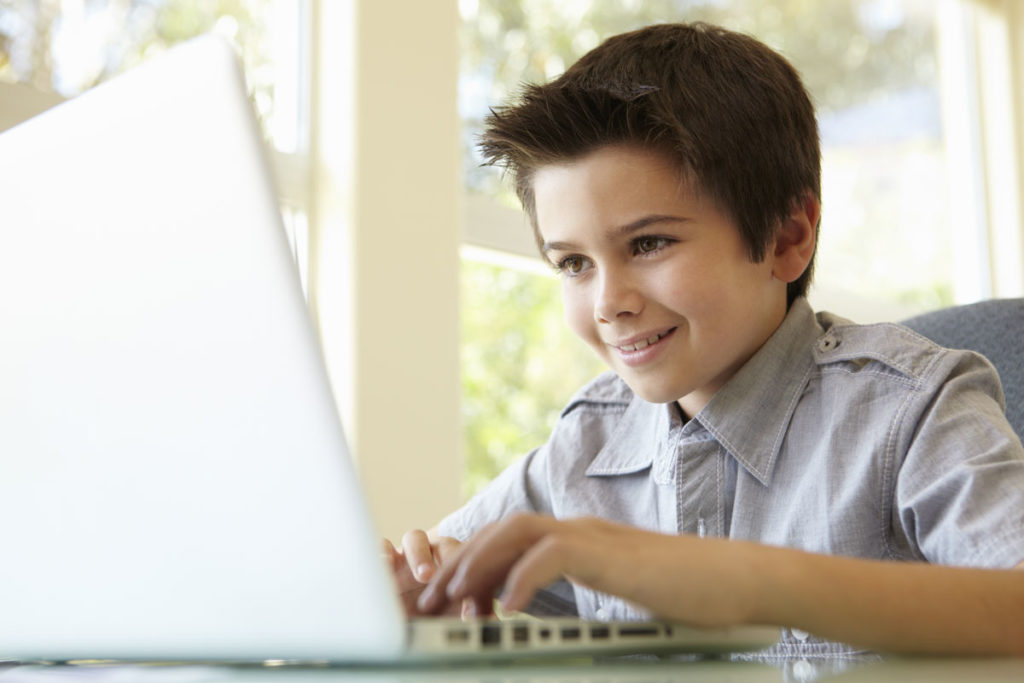
Limit Digital Distractions during Schoolwork
How do you keep your child on track when it comes to learning during a school shutdown? Schools are starting to get their heads around this one (it’s not easy) and a lot of the solutions rely on technology access.
We live in a time of amazing e-learning opportunities that happen in association with schoolwork as well as independently. The challenge is that this same opportunity opens up a host of digital distractions just a click or tap away.
How can an online maths program compete with Minecraft or YouTube? If we, as adults, cannot avoid the “quick look at Facebook” that becomes a 2-hour scroll-fest, how can we expect our kids and teens to do so?
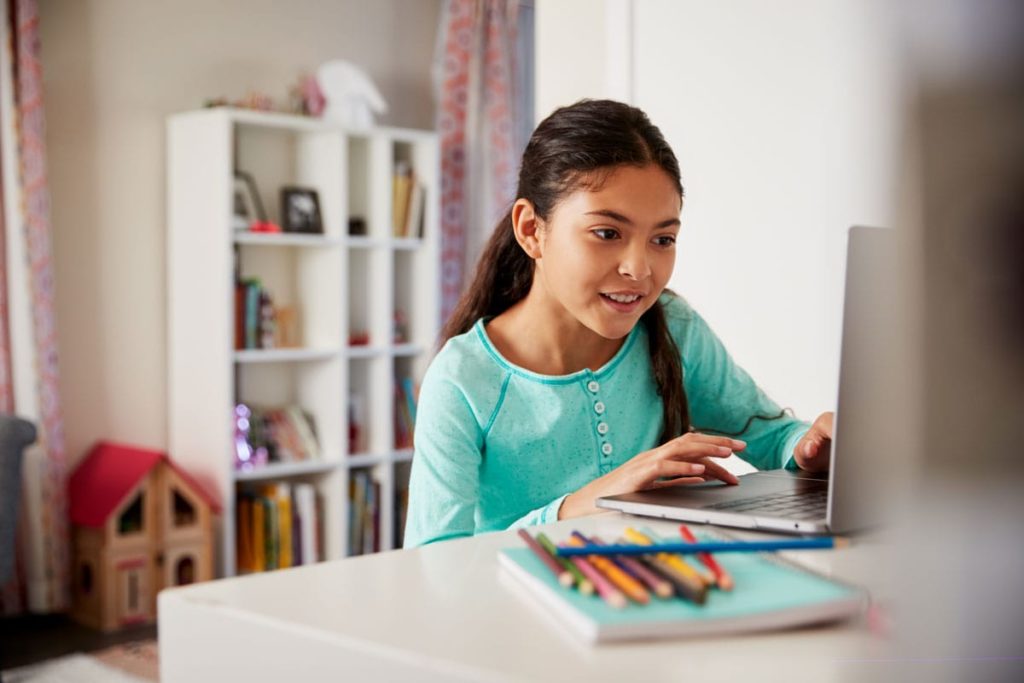
Limiting study time distractions is one of the primary reasons we created Habyts. If kids need the internet to complete their work, Habyts can make sure they focus on the right content and tasks.
Using our Habyts Study Time feature, you can set specific study times and block non-educational websites, like games and social media sites during Study Time. We’ve given you a recommended list to get started, but you can add or amend to the needs of each of your children. Habyts helps your child focus their attention and eliminate homework distractions, without scrapping their screen time.
We also know that Study Time has to fit the needs of the situation and the child, so we give parents the ability to allow All-day Study Time, set a Study Time Schedule, or start Study Time at the drop of a hat for a defined period.
Now neither you nor your child will fall behind.
A “Homework First” Plan
Is motivation an issue when it comes to schoolwork? Like the “Tasks First” plan, a “Homework First” Plan allows access to digital entertainment only AFTER completing homework. An “approve and review” process can help with children who rush through homework to get to screen time.
As kids increasingly do their homework on the computer, many parents find it helpful to use apps that restrict access to digital entertainment during study time. The Habyts app is a good one for this. Communicate to your child that this approach shows how much your family values Education and Learning – rather than positioning this approach as restrictive.
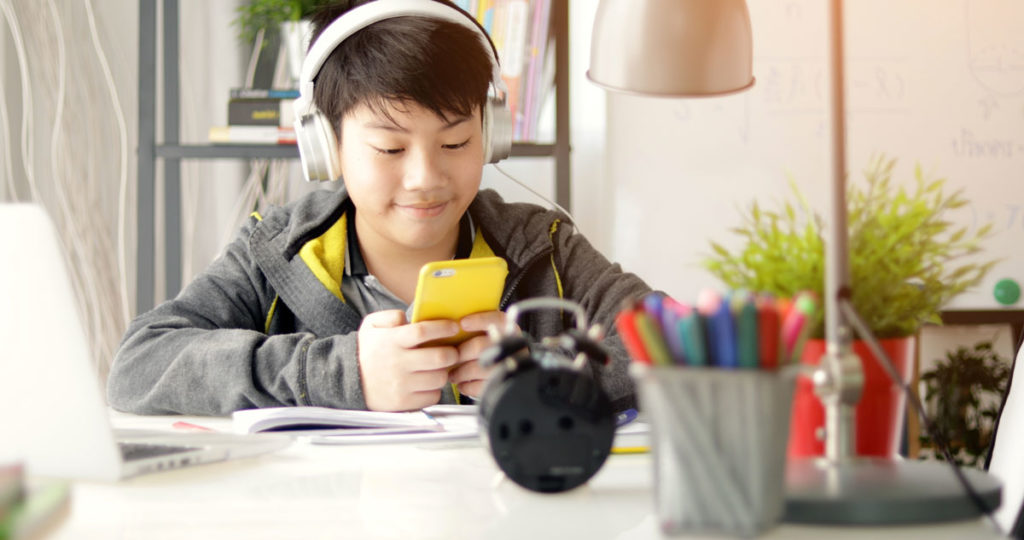
Teaching Kids to Self-Manage
One of the primary goals of a parent is to raise our children to be independent adults ready for whatever the future holds. This requires a long process of teaching self-management and self-regulation.
The time to begin is now, with small daily habits.
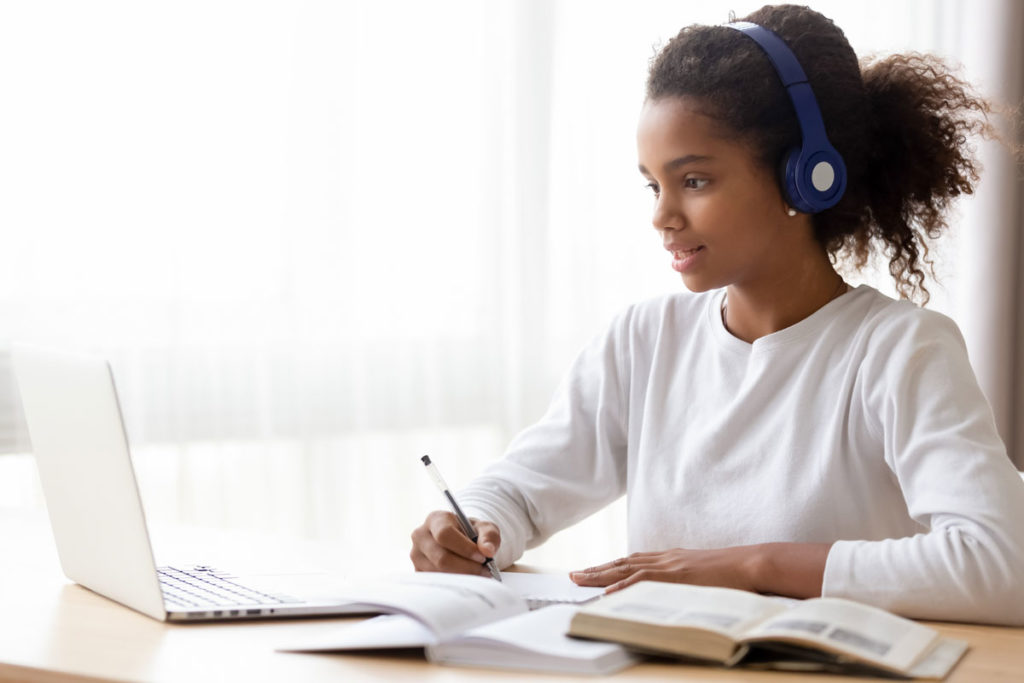
It’s one of the reasons that we take a different approach at Habyts. For example, after parents set a schedule with the earliest and latest time for screen time usage, they are then asked to set a daily digital Play Time Allowance for their kids. Kids and teens can then use all or bits of this time at any time within the allowed schedule.
This means kids can start and stop their own Play Time (within limits set by you).
In fact, we believe so strongly that Habyts is about teaching independent life habits that we’ve done the hard work on the hard stuff to make Habyts the next generation habit-building platform. As a result, Habyts is:
- an essential platform to link and automate the monitoring and management of screen time, behavior supports, tasks, homework, effort, assessment, goals, progress, and a unique points-and-privileges system to motivate kids through rewards and game mechanics
- a smart way to deliver a gamified Student Dashboard that motivates and empowers kids to monitor and manage their own screen time, tasks, targets, goals, progress and rewards.
- a shared tool to provide consistent visibility and enable collaboration for students, educators and guardians for online and offline habit-building across school, home and on-the-go

You can now see the rest of this article in Coronavirus: Parenting screen time and chores in a shutdown (Part 2).
Hope you find both articles helpful. You can also learn more about Habyts for Families and Habyts for Schools at www.habyts.com or contact us directly with any queries at contact@habyts.com.